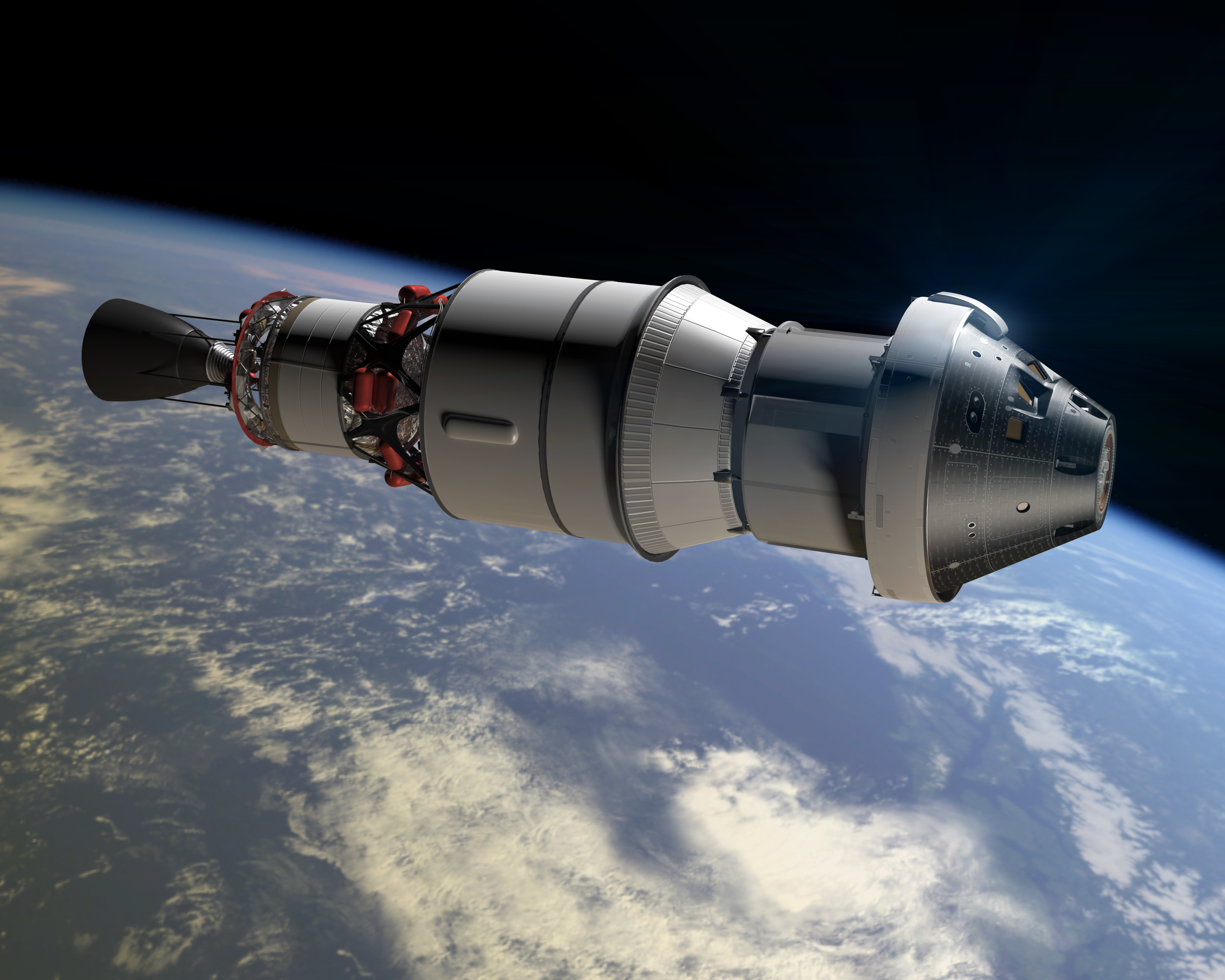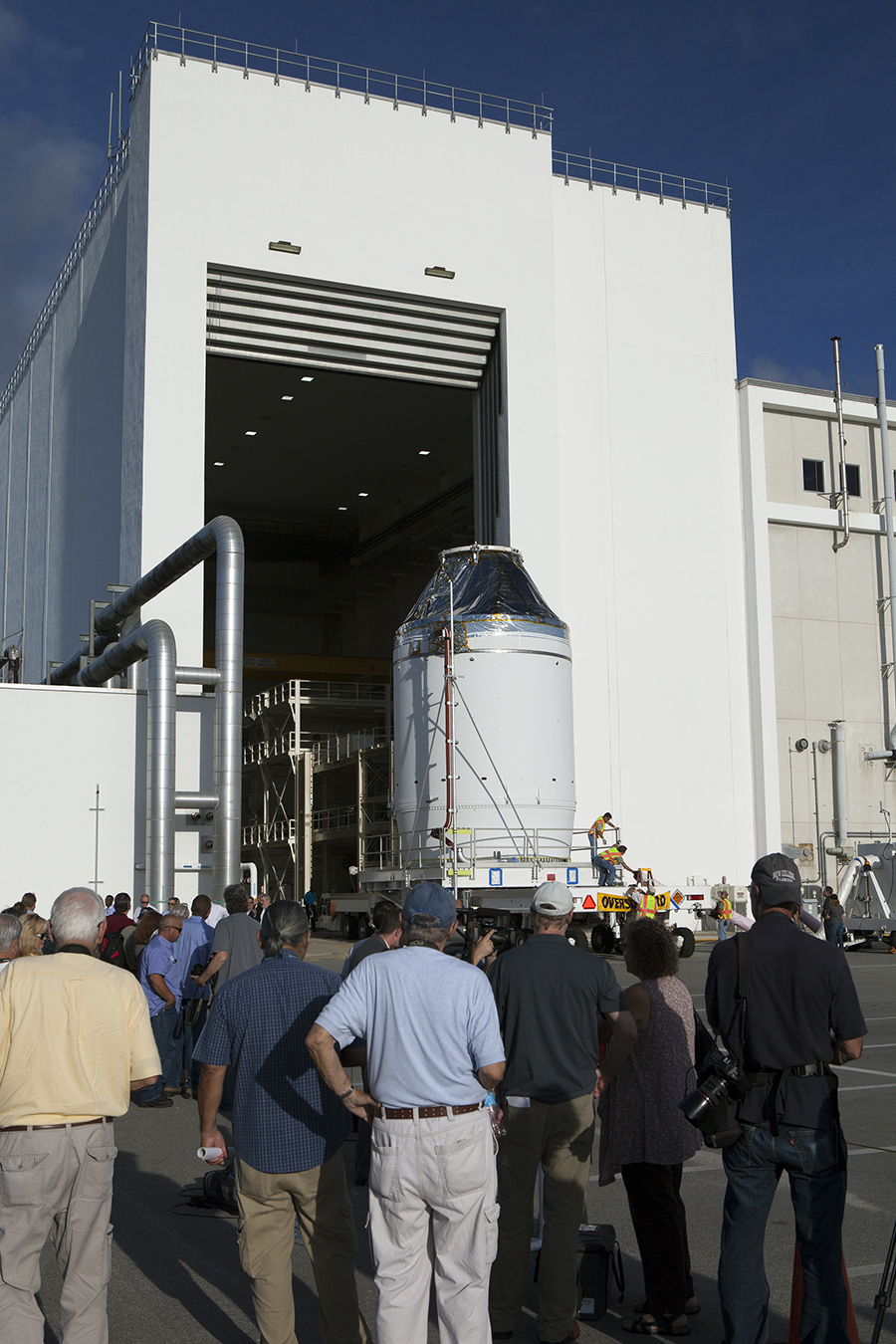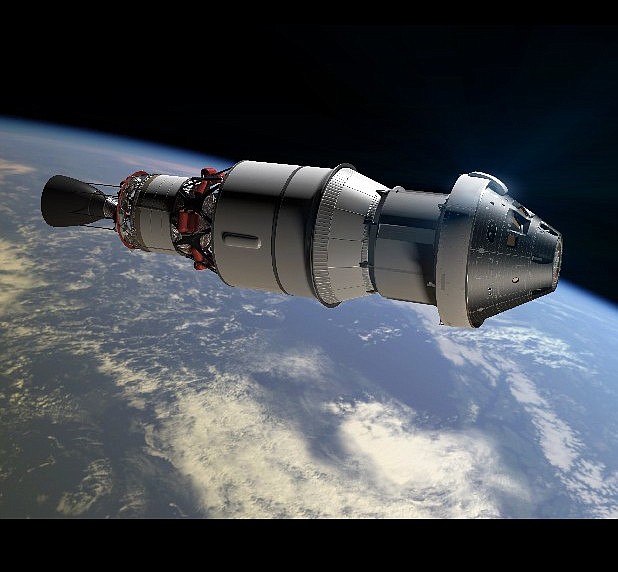 Artist's rendering of Orion during Exploration Flight Test-1, the first spaceflight of America's next-generation spacecraft. A scale model of this configuration of the Orion underwent buffet/acoustic testing in Arnold Engineering Development Center's 16-foot transonic wind tunnel in support of an upcoming flight test in 2014.
Artist's rendering of Orion during Exploration Flight Test-1, the first spaceflight of America's next-generation spacecraft. A scale model of this configuration of the Orion underwent buffet/acoustic testing in Arnold Engineering Development Center's 16-foot transonic wind tunnel in support of an upcoming flight test in 2014.Scientists and engineers in the tri-state region working on a future Mars mission will test their mettle in December with a space shot.
Officials at Arnold Engineering and Development Complex and Micro Craft in Tullahoma, Tenn., are crowing about their role, along with companies in Decatur, Tenn., and Scottsboro, Ala., in preparing and supporting the Orion spacecraft mission for its December launch.
The Dec. 4 test flight will be a four-and-a-half-hour mission that includes two orbits around Earth for the NASA Orion spacecraft, a capsule "designed to take humans farther than we've ever gone before," NASA spokeswoman Rachel Kraft said Thursday.
"It's the first spacecraft NASA's built since the shuttle era. We've tested Orion and its elements extensively on the ground but there's nothing like testing it in the environment it's going to face when we go to new destinations in the solar system," Kraft said.
Orion is the replacement for the space shuttles that began flying in 1981.
In Tullahoma, Jim Herron, CEO for Micro Craft Inc., formerly Alliant Techsystems, admits that the December test flight makes everyone a little nervous.
"But we're extremely excited about it; we were watching a video of the preview this morning," Herron said Friday.
Micro Craft built several of the wind-tunnel scale models used for aerodynamics testing. The firm also built the cases that hold the rocket motors on the Launch Abort System, designed to save the crew module should anything go wrong.
Herron said the NASA video about Orion's upcoming flight shows the rockets housed in Micro Craft's cases firing as the crew module is released from the main rocket.
• • • • •
 The Orion crew module, stacked atop its service module, moved out of the Neil Armstrong Operations and Checkout Building at NASA's Kennedy Space Center in Florida on Sept 11. Orion was transported to the Payload Hazardous Servicing Facility at Kennedy where it will be fueled ahead of its December flight test. During the flight, Orion will travel 3,600 miles into space to test the spacecraft systems before humans begin traveling in Orion on future missions.
The Orion crew module, stacked atop its service module, moved out of the Neil Armstrong Operations and Checkout Building at NASA's Kennedy Space Center in Florida on Sept 11. Orion was transported to the Payload Hazardous Servicing Facility at Kennedy where it will be fueled ahead of its December flight test. During the flight, Orion will travel 3,600 miles into space to test the spacecraft systems before humans begin traveling in Orion on future missions.The Dec. 4 flight from Cape Canaveral, Fla., will be the first big step toward manned missions, including at least one to the moon, then later, Mars.
The test flight dubbed "EFT-1" will take Orion to about 3,600 miles above the Earth's surface, about 15 times higher than the orbit of the International Space Station and farther than any vehicle intended for manned space flight has gone since the mid-1970s, NASA officials said.
"Nothing about building the first of a brand new space transportation system is easy," Orion program manager Mark Geyer said in a news release on the project. "But the crew module is undoubtedly the most complex component that will fly in December. The pressure vessel, the heat shield, parachute system, avionics - piecing all of that together into a working spacecraft is an accomplishment."
The work by Arnold Engineering and the other regional contractors will be put to the test when Orion passes twice through high radiation and then re-enters the Earth's atmosphere.
A team of engineers, technicians and machinists at AEDC conducted tests with a 5.9-percent scale model last year in the 16-foot transonic wind tunnel in support of the coming launch, said Nathan Payne, Aerospace Testing Alliance's project engineer for the test.
AEDC's participation in the project shows that the facility remains relevant despite all the military and NASA budget cutbacks, according to U.S. Sen. Lamar Alexander.
AEDC will continue to be "important to the military and NASA because of its uniqueness," Alexander said Wednesday.
Elsewhere in Tennessee, Air Draulics Engineering Co in Memphis, Flexial Corp. in Cookeville and Wiremasters Inc. in Columbia provided supplies and work on the developing rocket, which NASA calls the "Space Launch System," that will carry Orion into deep space. Other participating Tennessee companies are AMI Metals in Brentwood, Sword and Shield Enterprise Security in Knoxville and Tevet LLC in Mosheim.
Two other participating companies in the Chattanooga region are Avans Machine and Tool in Scottsboro, Ala., and Storm Copper Components Co. in Decatur, Tenn. Avans officials did not respond to requests for comment and officials at Storm Copper Components Co. declined to comment.
Huntsville, Ala. - home to Redstone Arsenal, Boeing, Marshall Space Flight Center and the well-attended U.S. Space and Rocket Center - is the site of a couple of dozen companies providing supplies and development for Orion, and facilities all around the Atlanta area are involved, too. Naturally, scores of companies nationwide have a hand in a project as large as Orion, NASA officials said.
All that work and development will be part of NASA's mission in December and beyond.
• • • • •
During re-entry in December, Orion will reach about 80 percent of the speed it will reach when it returns to Earth from a moon mission in the next few years. Friction from the Earth's atmosphere will push the heat shield tested at AEDC to about 4,000 degrees Fahrenheit, or twice the temperature of lava, Kraft said.
The Orion crew capsule - about 16 feet in diameter compared with the 12 to 13 feet of the Apollo capsules - will deploy a series of parachutes to decelerate from about 20,000 mph to 20 mph before it splashes down in the Pacific Ocean off the coast of Baja, Calif., she said.
"We'll be testing on this flight 10 of the top 16 risks to future crews for Orion, so it's really designed to get us ready to send humans in Orion," she said.
"The heat shield is a really critical element because it is the part of the spacecraft that is going to bear the brunt of the re-entry temperatures," Kraft said. "It is the largest heat shield ever built."
• • • • •
The next step is to use data from the Dec. 4 mission to get ready for the next flight, "Exploration Mission 1," that will test the new SLS rocket that will take crews on future missions. The December mission uses the Delta IV heavy rocket.
That subsequent mission will lead to the "Asteroid Redirect Mission," in which astronauts will "slowly nudge" an asteroid into a spot near the moon, Kraft said.
"We are trying to identify a small asteroid and take it to a spot behind the moon called a 'distant retrograde orbit' - it's essentially a stable point in the Earth-moon system - and we can relocate an asteroid there and send humans to study it to learn more about the origins of the solar system," she said.
"It'll also be the spacecraft that sends humans on the journey to Mars and returns them safely," Kraft said.
For the Mars mission, an additional habitat is being developed because the crew module can only sustain life for 21 days, she said.
Many of the same companies will be involved in that development, officials said.
Contact staff writer Ben Benton at bbenton@timesfreepress.com or twitter.com/BenBenton or www.facebook.com/ben.benton1 or 423-757-6569.

